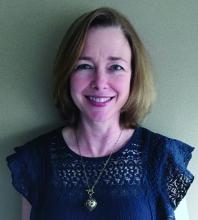Throughout the chaos of the COVID-19 pandemic, advanced practice providers (APPs) – physician assistants (PAs) and nurse practitioners (NPs) – have become an integral component of the hospitalist response. As many physicians began shifting into telemedicine and away from direct patient care, APPs have been eagerly jumping in to fill the gaps. Their work has been changing almost as dramatically and quickly as the pandemic itself, bringing with it expected challenges but bestowing hugely satisfying, often unanticipated, rewards.
APPs on the rise
As the coronavirus pandemic evolves, the role of APPs is evolving right alongside it. With the current relaxation of hospital bylaw restrictions on APPs, their utilization has increased, said Tracy Cardin, ACNP-BC, SFHM, a nurse practitioner and vice president of advanced practice providers at Sound Physicians. “We have not really furloughed any advanced practice providers,” Ms. Cardin said. “In fact, I consider them to be, within hospital medicine, a key lever to finding more cost-effective care delivery models.”
Ms. Cardin said APPs have been working more independently since COVID-19 started, seeing patients on their own and using physician consultation and backup via telemedicine or telephone as needed. With the reduction in elective surgeries and patient volumes at many hospitals, APP-led care also saves money. Because one of the biggest costs is labor, Ms. Cardin said, offering this high-quality care delivery model using APPs in collaboration with physician providers helps defray some of that cost. “We’re hoping that advanced practice providers are really a solution to some of these financial pressures in a lot of different ways,” she said.
“COVID … forced us to expedite conversations about how to maximize caseloads using APPs,” said Alicia Sheffer, AGAC-AGPC NP, a nurse practitioner and Great Lakes regional director of advanced practice providers at Sound Physicians in Cincinnati. Some of those staffing model changes have included using APPs while transitioning ICUs and med-surg units to COVID cohort units, APP-led COVID cohorts, and APP-led ICUs.
“At first the hospital system had ideas about bringing in telemedicine as an alternative to seeing patients, rather than just putting APPs on the front lines and having them go in and see patients,” said Jessica Drane, APRN, PhD, DNP FNP-C, a nurse practitioner and regional director of advanced practice provider services and hospital medicine at Sound Physicians in San Antonio. In Texas at the beginning of the pandemic, hospital numbers were so low that Dr. Drane did not work at all in April. “We were all afraid we were going to lose our jobs,” she said. Then the state got slammed and APPs have been desperately needed.
Ilaria Gadalla, DMSc, PA-C, a PA at Treasure Coast Hospitalists in Port St. Lucie, Fla., and the PA program director at South University, West Palm Beach, Fla., noted that many of her APP colleagues have pivoted fluidly from other specialties to the hospitalist realm as the need for frontline workers has increased. “Hospitalists have shined through this and their value has been recognized even more than previously as a result of COVID-19,” Dr. Gadalla said.
“I don’t think it’s any surprise that hospitalists became a pillar of the COVID pandemic,” said Bridget McGrath, PA-C, a physician assistant and director of the NP/PAs service line for the section of hospital medicine at the University of Chicago. “There are just some innate traits that hospitalists have, such as the ability to be flexible, to problem solve, and to be the solution to the problem.”


